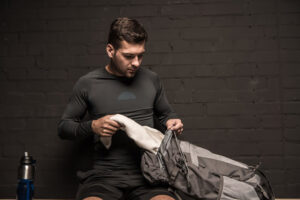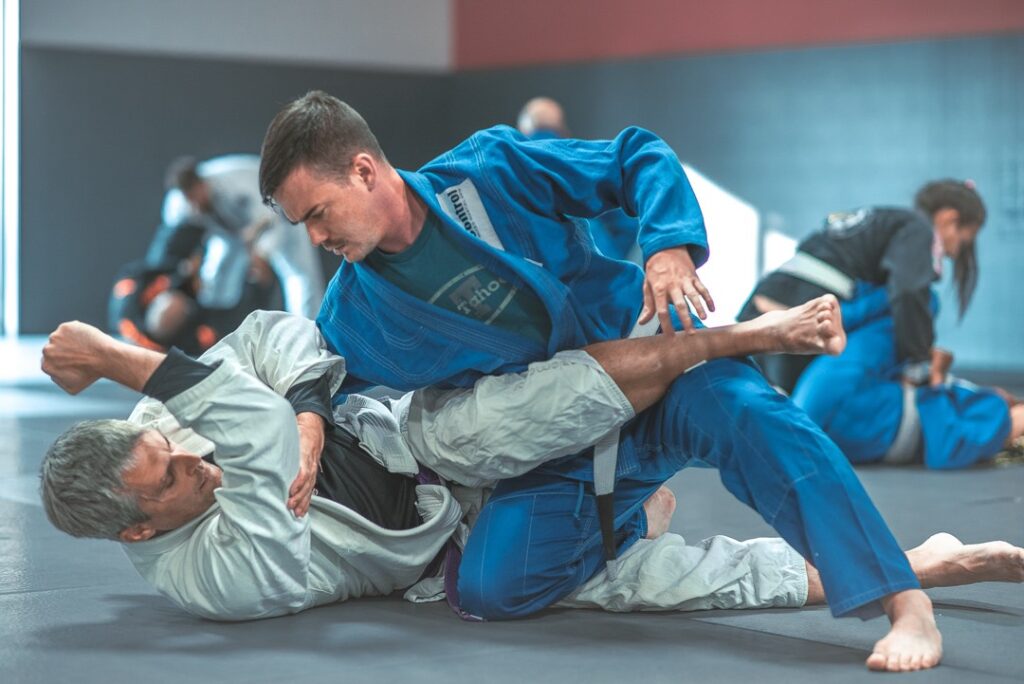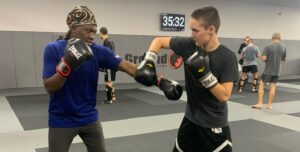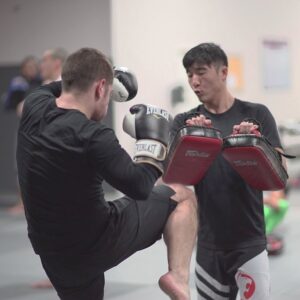
Gym Hygiene at Ground Control Palm Beach
Training at Ground Control Palm Beach means walking into a space where hard work, positivity, and teamwork come first. A clean environment is essential to
For Brazilian Jiu-Jitsu (BJJ) practitioners looking to take their skills to the next level, competition offers an ideal environment to test and expand one’s abilities. Whether focusing on technique refinement, speed, or strategic maneuvers, the beauty of BJJ lies in how athletes can adapt their style and evolve their approach.
Here’s a look into the different competition styles and strategies that make BJJ such a versatile and challenging martial art, offering insights into the strengths and techniques that advanced practitioners bring to the mats.
Gi and No-Gi formats in BJJ competition each demand a unique mindset and skill set. In Gi BJJ, practitioners use the traditional Gi (uniform) to slow down the pace and engage in calculated moves. The fabric provides grip advantages that open up a variety of techniques, such as collar chokes and lapel-based controls, emphasizing a methodical game plan. By focusing on grip strength and learning to control opponents through Gi grips, athletes often create a tactical and strategic experience.
No-Gi, on the other hand, is a faster-paced variation where practitioners compete without the traditional uniform. The lack of grips pushes athletes to prioritize speed, athleticism, and transitions. Without the Gi, control is more reliant on body mechanics and wrestling-style clinches. This format demands intense cardio, agility, and conditioning, making it an excellent test of overall fitness and reaction time. Those who cross-train in both Gi and No-Gi settings often find that their game becomes more versatile, as each format develops distinct skills.


In BJJ, some practitioners excel from the guard position, while others prefer to dominate from the top. Developing skills in both areas, however, can provide a competitive edge, making it harder for opponents to anticipate moves.
Those who specialize in guard-based play aim to control the pace from the bottom position. The goal is often to create sweeping or submission opportunities, using different guard variations like closed guard, spider guard, or De La Riva. Building a well-rounded guard game allows practitioners to take control even while on their back, using leverage and setups to score points or secure submissions.
For top players, the focus is on passing the guard and establishing control from above. Techniques like the knee-cut pass, torreando pass, and over-under pass are essential tools for those who favor a passing game. This approach relies on maintaining posture, applying pressure, and using calculated positioning to dominate an opponent. Top players often win by advancing to dominant positions such as mount or back control, securing points while minimizing openings for their opponents to counter.
Both approaches have unique strengths and weaknesses, and developing proficiency in both areas makes for a more dynamic and unpredictable competitor.
BJJ competitors often fall into two primary categories: submission-focused fighters and points-focused players. Each approach offers distinct advantages and requires a unique strategic focus.
Submission specialists prioritize finishing the match by applying submissions, from armbars and chokes to leg locks. This high-risk, high-reward strategy can quickly end a match but often opens practitioners up to counterattacks. Submission-focused fighters typically drill a series of submission chains and transitions, ensuring they have follow-up moves ready if the initial attempt fails. This style is as much about mental focus as it is physical skill, requiring quick adaptability to maintain offensive pressure.
In contrast, points players focus on advancing positions and maintaining control to accumulate points in line with competition rules. The approach is more calculated, with an emphasis on securing positional dominance such as mount, side control, or back control. Points players often have strong positional awareness and a patient approach, using incremental control to rack up points while keeping risk to a minimum. This style can be especially effective in longer matches, where endurance and positional consistency become critical.
Each competitor may favor one approach over the other, but successful athletes often develop a balance between the two, allowing them to adapt based on the situation at hand.
While Brazilian Jiu-Jitsu is known for its technical depth, physical conditioning and mental resilience are equally essential in a competitive setting. The intensity of competition places unique demands on an athlete’s endurance, strength, and ability to focus under pressure.
Competitors benefit from explosive strength training to enhance takedowns and scrambling ability, along with high-intensity interval training (HIIT) for cardio conditioning. Grip strength is another priority, especially for Gi players, as a strong grip can control an opponent’s movement and aid in submission attempts. Additionally, mobility and flexibility exercises are invaluable for injury prevention and can improve overall performance.
Mental preparation is equally vital, as BJJ competitions require quick decision-making, adaptability, and focus. Visualization techniques, along with breathing exercises, can help athletes manage nerves and remain composed. Developing mental resilience through consistent practice helps competitors stay calm and execute their game plan effectively, even in high-stress moments.
The final layer to becoming a successful BJJ competitor is learning to read and react to opponents in real-time. Understanding an opponent’s tendencies and adapting one’s strategy accordingly can turn the tide in a close match.
Competitors can sharpen this skill by observing details such as an opponent’s preferred guard or passing style, their tendencies in scrambles, and their go-to techniques. Situational drilling is a valuable training tool here, allowing practitioners to simulate common scenarios and practice reactions, such as escaping from a dominant position or countering a specific submission attempt. This adaptability often separates top-tier competitors, enabling them to stay one step ahead in high-pressure situations.
Training with a diverse range of partners also helps competitors adapt to different body types, strengths, and styles, making them more prepared for the unpredictability of tournament settings.
For those interested in taking their Brazilian Jiu-Jitsu skills to the next level, Ground Control Palm Beach offers a supportive and challenging environment for aspiring competitors. With dedicated instructors, specialized classes, and a community passionate about BJJ, Ground Control Palm Beach provides the tools necessary for serious athletes to refine their game, condition their bodies, and sharpen their strategies.
Whether looking to improve fundamentals or fine-tune competition-specific techniques, Ground Control Palm Beach welcomes all levels. Contact us today to learn more about our BJJ classes and join a team that’s ready to help individuals excel on the mats and beyond.

Training at Ground Control Palm Beach means walking into a space where hard work, positivity, and teamwork come first. A clean environment is essential to

Boxing is one of the most demanding sports in the world, testing endurance, strength, coordination, and mental willpower. It’s not just about how hard you hit; it’s about how long you can stay sharp, explosive, and composed when fatigue sets in.

Known worldwide as the “Art of the Eight Limbs,” Muay Thai blends raw power with razor-sharp precision, impeccable timing, and deep mental strategy. It’s a